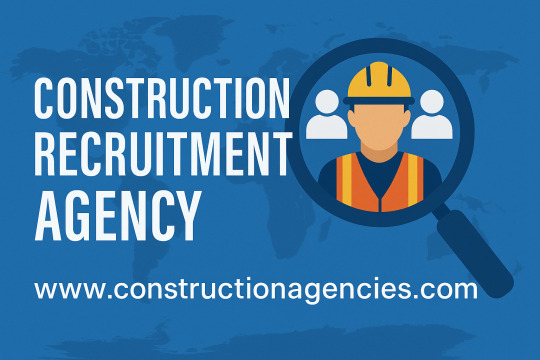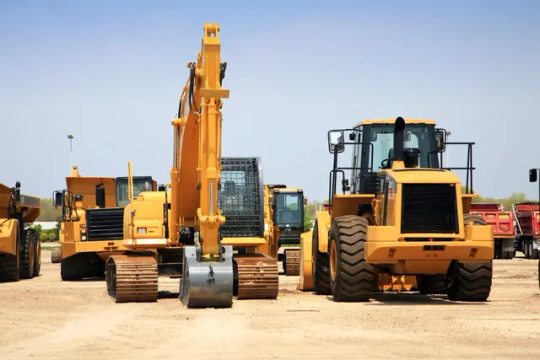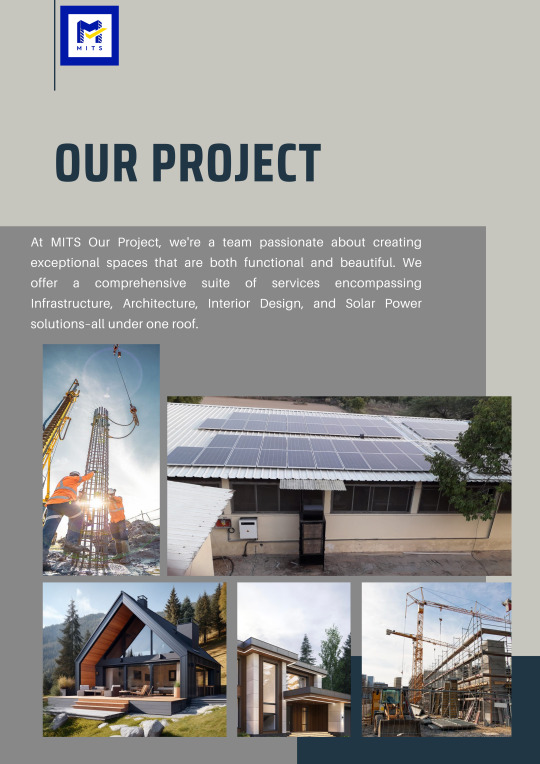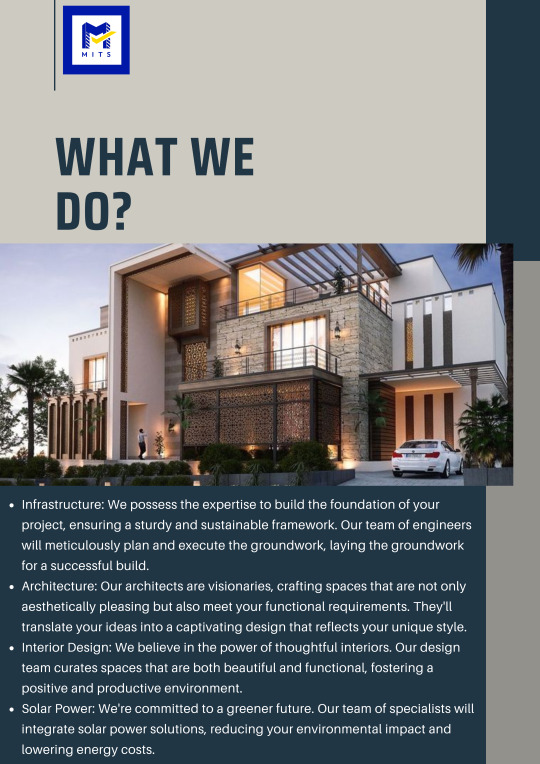#infrastructuredevelopment
Explore tagged Tumblr posts
Text




👉 Beneath the Himalayas: Unveiling the Underwater Secrets of Jammu & Kashmir with Bathymetric Surveys ✅ Bathymetric Survey in Jammu & Kashmir plays a vital role in understanding the intricate underwater terrain of this ecologically rich and strategically significant region. Jammu & Kashmir’s water bodies—from the lofty alpine lakes like Dal and Wular to the glacier-fed rivers such as the Chenab and Jhelum—serve purposes far beyond their breathtaking beauty. Call : +91 8074692090 Visit : https://slokainfrasolutions.com/blogs/bathymetric-survey-in-jammu-kashmir/
#BathymetricSurvey#UnderwaterMapping#HydrographicSurvey#LakeMapping#GeospatialData#InfrastructureDevelopment#SmartSurveying#EnvironmentalMonitoring#RemoteSensing#GISMapping#SlokaInfraSolutions#DepthMeasurement#SonarTechnology#WaterbodyMapping#SeabedSurvey#SurveyTechnology#JammuAndKashmir#Himalayas#JKTourism#KashmirLakes#IndianGeography#HimalayanWaters
2 notes
·
View notes
Text
MITS is your one-stop solution for building a brighter future. We offer a comprehensive suite of services encompassing everything from harnessing clean energy with our innovative solar power solutions to crafting beautiful and functional spaces through our expert interior design team. Our skilled architects and construction professionals will bring your vision to life, while our infrastructure expertise ensures a solid foundation for your project. Whether you're seeking a sustainable home renovation, a groundbreaking commercial development, or a complete infrastructure overhaul, MITS partners with you every step of the way, delivering exceptional results that are both aesthetically pleasing and built to last. Contact MITS today for a free quote! +91-120-490-8963 [email protected]
#constructioncompany#explore#infrastructure#interioresdesign#interiors#architecture#infrastructuredevelopment#designbuildrepair#designdeinterior#construction#SolarPower#RenewableEnergy#SustainableLiving#SaveMoneySaveThePlanet#mitsconstruction
2 notes
·
View notes
Text

The United States' planned high-speed rail projects have the potential to completely transform the way people travel by quickly and sustainably connecting major cities. With fewer automobiles and planes on the road, travelers will have more convenient options, and the country's transportation system will be improved, thanks to these measures.
#breaking news#global news#world news#usa news#whatshappeningintheworld#news#HighSpeedTrains#InfrastructureDevelopment#USRailways#ModernTransportation#GreenTravel#FutureofTransport#SustainableMobility#USInfrastructure#RailwayRevolution#TransportationUpgrade#RailwayDevelopment#EcoFriendlyTravel#USRailNetwork#GreenTransit#FastTracks#TravelTech#TransitInnovation#RailwayExpansion#AmericanRailways#TransportationTransformation#united states#america#usa today#biden administration
2 notes
·
View notes
Text

#ISOCertification#ISO9001#QualityManagement#IndustrialGrowth#SaudiArabia#Vision2030#BusinessTransformation#Manufacturing#Compliance#QualityAssurance#InfrastructureDevelopment#MiddleEast#OilAndGasIndustry#CorporateGrowth#EconomicGrowth#Industry4_0#SupplyChain#BusinessExcellence#StartupSaudi#BusinessStrategy
0 notes
Text
Ready-Mix Concrete Market Growth Driven By Urban Infrastructure Expansion
The Ready-Mix Concrete Market is experiencing accelerated growth, largely fueled by the rapid expansion of urban infrastructure across the globe. As metropolitan areas evolve to accommodate population booms and economic progress, demand for construction materials that deliver speed, strength, and scalability—like ready-mix concrete (RMC)—has intensified significantly.
Urbanization Sparks Strong Demand
With global urban populations growing at unprecedented rates, cities face pressure to enhance housing, mobility, and essential utilities. Ready-mix concrete, known for its quality consistency and efficiency, is increasingly favored in the construction of roads, metro systems, tunnels, bridges, and large residential and commercial projects.
In regions such as Southeast Asia, Sub-Saharan Africa, and parts of Latin America, new city zones and urban extensions are being built from the ground up. These megaprojects rely on high-volume, precise delivery—features that RMC suppliers are uniquely equipped to provide.
Public Infrastructure Projects Drive Consumption
Governments around the world are scaling up infrastructure budgets, seeing public works as economic catalysts. In India, the Smart Cities Mission has driven large-scale RMC usage in rapid transit, stormwater systems, and energy-efficient buildings. In the U.S., the Infrastructure Investment and Jobs Act is earmarking over $1 trillion for highways, ports, and broadband, all requiring concrete in massive quantities.
Emerging economies are likewise directing funds into roads, water systems, and urban housing. Ready-mix concrete, with its time-saving batch mixing process and regulated quality control, is vital in these cost-conscious yet high-speed initiatives.
Superior Efficiency and Quality Assurance
Urban construction projects face several challenges: limited space, tight timelines, and labor shortages. RMC addresses these pain points by offering:
Factory-controlled quality: Batching plants monitor mix ratios to deliver consistent results.
Reduced on-site labor: Fewer workers are needed for mixing, lowering costs and safety risks.
Faster completion: Concrete is delivered ready to pour, minimizing construction delays.
Additionally, batching plants are often strategically located near high-demand zones, reducing delivery times and ensuring uninterrupted project flow.
Technological Enhancements Aid Urban Construction
Urban developers are also leveraging new technologies in concrete mix design. Today’s RMC includes self-compacting, fiber-reinforced, and temperature-controlled variants. These innovations improve workability in constrained sites and enhance load-bearing capacity for large-scale structures.
Digital integration is another growth catalyst. Contractors use real-time delivery tracking, sensor-based slump measurement, and automated plant controls to ensure consistency. These features are particularly critical in urban environments where construction timelines are often non-negotiable.
Regulatory Pressures and Environmental Goals
As cities adopt sustainability frameworks, the construction sector is under increasing scrutiny for its environmental footprint. RMC producers are responding by adopting:
Low-carbon cement blends
Recycled water use
Waste management systems at batching plants
Urban building codes now often require LEED or BREEAM-certified construction. RMC plays a central role in meeting such criteria by offering pre-tested, specification-compliant mixes that reduce overall site emissions.
Urban Resilience and Climate Readiness
Climate-resilient infrastructure is a growing priority for urban planners. RMC is vital in constructing flood-resistant buildings, sea walls, and drainage systems. In coastal cities, special formulations of ready-mix concrete are being used for salinity resistance and long-term durability.
As extreme weather events increase, RMC’s flexibility in composition enables builders to tailor solutions that stand the test of time while still meeting fast-paced project schedules.
Future Outlook: Expansion with Strategy
The ready-mix concrete industry is responding to urban growth by investing in regional batching capacity, fleet upgrades, and process digitization. Leading players are forming partnerships with public agencies, real estate developers, and transit authorities to secure long-term supply contracts.
Markets like China, Indonesia, Brazil, and Egypt are forecast to experience double-digit RMC growth in the next five years as megacities emerge and peri-urban zones expand.
Conclusion
Urban infrastructure expansion is transforming the landscape of the Ready-Mix Concrete Market. With high-performance requirements, sustainable building standards, and rising urban density, RMC is emerging not just as a preferred material but as an urban construction essential. As infrastructure evolves, so will the role of RMC—cementing its position in building the cities of tomorrow.
#urbaninfrastructure#readymixconcrete#constructiontrends#cementindustry#smartcities#sustainablebuilding#civilengineering#concreteinnovation#infrastructuredevelopment#urbanplanning
0 notes
Text

#ConstructionRecruitment#UKConstruction#BuildingTheFuture#ConstructionCareers#InfrastructureDevelopment
0 notes
Text
Construction Equipment Rental Market Drivers: Key Forces Powering Industry Growth and Transformation
The construction equipment rental market is undergoing a significant transformation driven by multiple economic, operational, and environmental factors. As global infrastructure projects continue to rise and companies prioritize cost-effective operations, the demand for rental equipment is expanding at a rapid pace. Businesses across construction, mining, and real estate sectors are increasingly relying on rental models for flexibility, affordability, and access to advanced machinery.

Cost Efficiency and Capital Optimization
One of the foremost drivers of the construction equipment rental market is the growing emphasis on cost efficiency. Purchasing construction machinery involves a substantial capital investment, often tied to long-term ownership costs including insurance, maintenance, and depreciation. Renting offers a viable alternative, especially for small to mid-sized contractors who may not have the financial bandwidth for outright purchases. This allows them to allocate their capital more effectively to other areas such as project management, labor, and technology adoption.
Additionally, rental agreements typically include maintenance services, reducing the operational burden on the contractors. This not only cuts down on unexpected repair costs but also ensures the equipment is in optimal working condition, minimizing project delays due to breakdowns.
Increased Infrastructure Development
A surge in global infrastructure development is another significant factor propelling the growth of the construction equipment rental market. Rapid urbanization, particularly in developing economies, has led to substantial investments in roads, bridges, airports, and residential complexes. These large-scale projects require various types of construction equipment such as excavators, loaders, cranes, and compactors — often for limited durations during specific project phases.
Renting becomes an ideal solution for such short-term needs, allowing construction firms to procure exactly what they need, when they need it. This strategic flexibility prevents idle equipment from occupying storage or consuming resources outside its period of utility.
Technological Advancements and Equipment Modernization
The market is also driven by the growing pace of technological innovation in construction machinery. Equipment manufacturers are consistently launching new models with features like telematics, GPS tracking, and fuel efficiency enhancements. These innovations, while valuable, often come at a premium cost.
Rental companies tend to update their fleet regularly, giving contractors access to the latest technology without the high cost of ownership. This not only improves operational efficiency but also helps firms comply with increasingly stringent environmental and safety regulations. Moreover, the access to modern equipment enhances productivity and reduces the risk of workplace injuries, making rental an even more attractive option.
Shift Toward Asset-Light Business Models
The construction industry is increasingly adopting asset-light business strategies to remain agile in a competitive environment. Renting rather than owning allows businesses to stay flexible and scale operations based on project needs. This is especially beneficial in fluctuating economic conditions, where long-term asset ownership might become a liability.
By choosing rental over purchase, construction firms can also test different models and brands before making permanent investment decisions. This trial-based approach helps them make informed decisions and better match equipment to job site requirements.
Environmental and Regulatory Pressures
Growing awareness around sustainability and environmental impact is influencing decisions in the construction industry. Rental companies, which often maintain a younger fleet of machines with better emissions control and fuel efficiency, offer a greener alternative compared to older owned equipment. This aligns well with government policies promoting eco-friendly construction practices.
Regulatory norms concerning emissions and noise levels are also stricter than ever. Renting from a provider that ensures compliance saves contractors the effort and cost of upgrading outdated machinery to meet legal standards.
Government Initiatives and Public Investments
In many regions, government-led initiatives to revamp infrastructure have led to increased spending on public projects. These initiatives act as strong catalysts for the construction equipment rental market. Contractors working on public infrastructure often face stringent deadlines and budget constraints — both of which are better managed through equipment rental.
Moreover, the government's promotion of public-private partnerships (PPPs) has led to more involvement from private construction firms in national development, further fueling the demand for efficient and timely equipment access through rental models.
Growing Demand in Emerging Markets
Emerging markets in Asia-Pacific, Latin America, and parts of Africa are witnessing fast-paced urban development and economic expansion. However, many local firms in these regions lack the financial resources for equipment ownership. Rental services fill this gap, enabling them to participate in growth opportunities without overextending their budgets.
These markets are also seeing an influx of global rental service providers looking to tap into unmet demand, which is improving the availability and variety of equipment choices for regional contractors.
In conclusion, the construction equipment rental market is experiencing strong momentum due to a confluence of cost, technology, policy, and market factors. As the industry continues to evolve, rental solutions will play an increasingly vital role in supporting efficient, scalable, and sustainable construction practices worldwide.
#ConstructionEquipmentRentalMarket#RentalMarketDrivers#InfrastructureDevelopment#ConstructionInnovation#EquipmentRentalTrends
0 notes
Text
🚗🏙️ Rising Above the Congestion: Multi-Storey Car Parks Market Update
In the era of urban sprawl and limited ground space, multi-storey car parks are transforming how cities manage mobility. Whether it’s streamlining public transport hubs or enhancing residential convenience, vertical parking is the future.
📈 Market Outlook:
2024: USD 3.09 billion
2025: USD 3.18 billion
2033 (Projected): USD 4.03 billion
CAGR (2025–2033): 📊 3%
🛠️ By Type:
Semi-Automatic: Human-assisted systems using lifts, conveyors & sensors
Fully Automatic: High-tech vertical stacking to maximize space, minimize land use
🏢 By Application:
Residential: Solving space scarcity in high-density housing
Public: Supporting transportation hubs & city centers where street parking fails
Business: Improving corporate accessibility with secure, nearby parking for employees and clients
🏗️ Key Industry Players:
Wohr (Germany)
HUBER (U.S.)
Goldbeck (Germany)
RR Parkon (India)
Bourne Group (U.K.)
🌐 Why It Matters: Multi-storey car parks aren't just about space—they’re about smart urban mobility, better land use, and smoother logistics for people, goods, and services in compact cities.
🚦 Less street chaos. 🏙️ More efficient infrastructure. 🔐 Safer, smarter parking.
🔗 Full market insights here: Read the Report
#SmartCities#UrbanMobility#CarParkInnovation#VerticalParking#InfrastructureDevelopment#ParkingSolutions#SustainableUrbanPlanning#PublicTransportAccess#MultiStoreyCarPark#FutureOfParking#CityPlanning#TumblrUrbanism
0 notes
Text


🔧 PRECISION IN MOTION! Engineering Excellence, Every Time!
At Asiatics Infratechh Pvt. Ltd., we believe in transforming challenges into achievements. Through seamless coordination and timely delivery, we bring engineering precision to every project — from railways to metros to highways.
🚧 Complex tasks? We make them smooth operations. 🎯 Excellence isn’t just a goal. It’s our standard.
💼 Driven by Expertise | Defined by Results
@asia.ticsinfratechh
#AsiaticsInfratechh#PrecisionInMotion#EngineeringExcellence#InfrastructureLeaders#TimelyDelivery#SmartExecution#MakeInIndia#ProjectExecution#InfrastructureDevelopment#BuildingIndia#SeamlessCoordination#AsiaticsProjects#ConstructionInnovation
0 notes
Text
🚆 Want to know how trains run safely and smoothly across the world? Railway Engineering is the backbone of modern transportation—designing tracks, signals, and train systems that keep our world moving! It involves everything from the planning of high-speed railways to ensuring the durability of tracks, the efficiency of locomotives, and the integration of smart technologies. This branch of engineering ensures millions reach their destinations safely, every single day.
#RailwayEngineering#TrainTechnology#FutureOfTransport#CivilEngineering#PublicTransport#RailSystems#TransportInnovation#EngineersHeaven#InfrastructureDevelopment#STEMeducation
1 note
·
View note
Text
The demand for modern, efficient, and sustainable structures is constantly rising, encouraging the entry of several reputed players into the market. A well-established construction company in gujarat can now offer end-to-end solutions that meet global standards.
0 notes
Text
Crafting Livable Spaces & Sustainable Solutions: MITS Our Project
MITS Our Project is a comprehensive infrastructure, architectural, and interior design firm committed to creating exceptional and sustainable spaces. We combine expertise in design, construction, and renewable energy to deliver projects that are not only aesthetically pleasing but also functional and environmentally responsible. We offer a full range of services, from initial concept development to project completion, ensuring a seamless and successful experience for our clients.





#explore#infrastructure#interiors#constructioncompany#interioredesign#Architecture#modern architecture#sustainabledesign#solarpowerplant#infrastructuredevelopment
2 notes
·
View notes
Text
#ConstructionRecruitment#UKConstruction#BuildingTheFuture#ConstructionCareers#InfrastructureDevelopment
0 notes
Text
#EVCharging#SustainableTransport#ElectricVehicles#GreenMobility#InfrastructureDevelopment#SmartCharging#EVInfrastructure#electricvehiclesnews#evtimes#evbusines
0 notes
Text
Heating Cables Market Trends: Rising Demand for Freeze Protection Systems Drives Growth in Cold Climate Regions
The Heating Cables Market is experiencing steady expansion due to increasing reliance on energy-efficient solutions for freeze protection. As infrastructure in cold climate zones continues to modernize, heating cables are emerging as an essential component for maintaining safety and operational efficiency in diverse sectors.

Rising Need for Freeze Protection in Harsh Environments
In regions characterized by extreme winters, maintaining water flow in pipelines and preventing structural damage from ice accumulation is crucial. Heating cables serve this need by delivering consistent, low-level heat to pipes, roofs, and driveways. The market has seen a significant uptick in installations across North America, Northern Europe, and parts of Asia-Pacific, where sub-zero temperatures prevail for extended periods.
As governments enforce stricter building codes focused on safety and energy efficiency, demand for reliable freeze protection systems continues to escalate. Industrial facilities, in particular, depend heavily on these systems to avoid costly downtime and damage.
Technological Advancements Drive Product Innovation
One of the major trends shaping the Heating Cables Market is rapid technological advancement. Modern heating cables are more efficient, user-friendly, and equipped with smart sensors and control systems. These advancements reduce energy consumption by regulating heat output based on ambient temperature, thus aligning with global sustainability goals.
Self-regulating heating cables, for instance, automatically adjust their power output according to the surrounding temperature. This has minimized the need for constant manual monitoring and cut operational costs significantly. The integration of Internet of Things (IoT) technologies has further enhanced the monitoring and automation of heating systems in both residential and industrial settings.
Surge in Residential and Commercial Applications
While industrial applications continue to account for a large share of the market, residential and commercial segments are rapidly gaining traction. Homeowners are increasingly investing in underfloor heating and roof de-icing systems, particularly in regions prone to snow and ice accumulation.
In commercial buildings, heating cables are used for floor heating, pipe freeze protection, and hot water temperature maintenance. The hospitality and healthcare sectors are among the major contributors to this demand due to their stringent safety and comfort standards. As urban infrastructure expands, retrofitting existing structures with heating cables is becoming a standard practice.
Regulatory Support and Government Initiatives
Government regulations and incentives are playing a pivotal role in supporting the growth of the Heating Cables Market. In several cold-weather countries, construction codes now mandate the use of freeze protection systems in certain types of buildings and infrastructure. Subsidies for energy-efficient heating solutions have also encouraged adoption in both public and private sectors.
Environmental policies promoting reduced carbon footprints have created further momentum. Manufacturers are now focusing on eco-friendly materials and sustainable production practices, giving rise to a new generation of green heating cables that align with environmental goals without compromising performance.
Market Challenges and Restraints
Despite its promising outlook, the Heating Cables Market faces a few hurdles. The high initial cost of installation, especially for large commercial and industrial projects, remains a barrier. Additionally, in regions with moderate climates, the return on investment may be insufficient to justify the upfront expense.
Lack of awareness and technical expertise in emerging economies further restricts market penetration. However, ongoing educational initiatives by manufacturers and distributors are gradually bridging this gap. Training programs for technicians and installers are also expanding to support proper implementation and maintenance of heating cable systems.
Future Outlook: Innovation and Regional Expansion
The long-term outlook for the Heating Cables Market is robust. Continued investment in R&D will drive innovation in insulation materials, temperature control systems, and installation methods. The market is also likely to see increased consolidation as larger players acquire regional firms to expand their reach and capabilities.
Emerging markets in Eastern Europe, Central Asia, and parts of South America represent untapped potential. As awareness grows and cold-weather infrastructure projects increase in these regions, demand for heating cables is expected to rise accordingly. Industry players focusing on cost-effective solutions and tailored offerings for these markets will be well-positioned for success.
Conclusion
As global temperatures fluctuate and the need for efficient building solutions grows, the Heating Cables Market stands at the forefront of cold climate innovation. With rising demand for freeze protection systems, backed by technological advancements and regulatory incentives, the market is poised for sustained growth. Strategic investments in product development and regional outreach will further shape the industry’s evolution in the coming years.
#HeatingCablesMarket#FreezeProtection#ColdClimateSolutions#SmartHeatingSystems#EnergyEfficiency#BuildingInnovation#SelfRegulatingCables#InfrastructureDevelopment#IoTInHeating#SustainableHeating
0 notes
Text
Aluminum Market Forecast 2032: Sustainability and Innovation Lead the Way

The global aluminum market is poised for substantial growth through 2032, driven by expanding applications across multiple industries, ongoing technological advancements, and the worldwide shift toward sustainable and lightweight materials. As demand continues to surge across sectors such as transportation, construction, packaging, and electronics, aluminum is emerging as a critical metal in modern industrial development.
Market Size and Revenue Projections
By 2032, the aluminum market is expected to witness a significant increase in valuation compared to the early 2020s. Factors contributing to this expansion include rising urbanization, infrastructure development in emerging economies, and the global push toward low-emission vehicles. The market size was valued at USD 189.25 Billion in 2024 to USD 269.87 Billion by 2032, growing at a CAGR of 5.2% during the forecast period (2025-2032).
Get a Free Sample Report - https://www.skyquestt.com/sample-request/aluminum-market
Key Market Drivers
1. Sustainability and Recycling Trends: Aluminum's recyclability with minimal quality loss makes it a preferred choice in industries committed to reducing their carbon footprints. The recycling process consumes only a fraction of the energy required for primary aluminum production, driving circular economy initiatives and influencing corporate sustainability strategies.
2. Automotive and Transportation Sector Growth: The demand for lightweight materials in vehicle manufacturing is pushing automotive companies to integrate more aluminum into their designs. This shift not only improves fuel efficiency in internal combustion engines but also enhances battery range and structural integrity in electric vehicles, making aluminum critical in the evolution of next-generation mobility.
3. Infrastructure and Construction Development: Aluminum’s durability, corrosion resistance, and design flexibility make it ideal for construction and architectural applications. With rapid urbanization, particularly in Asia-Pacific, the use of aluminum in residential, commercial, and infrastructure projects is growing rapidly, supporting market expansion.
4. Technological Advancements: Ongoing innovations in aluminum processing, alloy development, and additive manufacturing are unlocking new use cases. High-performance aluminum alloys are now being used in aerospace, defense, and consumer electronics, where strength-to-weight ratio and conductivity are vital.
Make an Inquiry to Address your Specific Business Needs - https://www.skyquestt.com/speak-with-analyst/aluminum-market
Aluminum Market Segments Analysis
Global Aluminum Market is segmented by Product, Alloy Type, End-use and region.
Based on Product, the market is segmented into, Sheet, Plate, Cast Products, Extrusion, Others.
Based on Alloy Type, the market is segmented into Cast Alloy, Wrought Alloy.
Based on End-use, the market is segmented into Construction, Transportation (Aerospace, Automotive, Marine), Packaging (Food & Beverages, Cosmetics, and Others), Electrical, Consumer Durables, Machinery & Equipment, Others.
Based on region, the market is segmented into North America, Europe, Asia Pacific, Latin America and Middle East & and Africa.
Regional Market Insights
Asia-Pacific remains the largest and fastest-growing regional market, with China and India being key contributors due to high industrial output and investment in renewable energy and construction.
North America and Europe are expected to maintain steady growth, driven by automotive electrification, regulatory support for sustainable packaging, and advancements in recycling technologies.
Middle East & Africa is gradually gaining traction due to investment in infrastructure and the expansion of domestic smelting capacities.
Take Action Now: Secure Your Aluminum Market Today - https://www.skyquestt.com/buy-now/aluminum-market
Market Challenges
Despite its positive outlook, the aluminum market faces certain challenges. Energy-intensive production processes, particularly in primary smelting, expose the industry to fluctuating energy prices and environmental regulations. Moreover, supply chain disruptions and geopolitical tensions can affect bauxite and alumina availability, influencing pricing and global trade dynamics.
Competitive Landscape
The aluminum industry is moderately consolidated, with major global players competing through vertical integration, capacity expansions, and investments in green technologies. Key companies are increasingly focusing on low-carbon aluminum production and forging long-term supply agreements with automotive and packaging giants.
Top Players Global Aluminum Market
Alcoa Corporation
Aluminum Corporation of China Limited (CHALCO)
Emirates Global Aluminium
Rio Tinto
Norsk Hydro ASA
China Hongqiao Group Limited
RUSAL
Vedanta Aluminium & Power
Hindalco Industries Ltd.
Shandong Xinfa Aluminum Group
East Hope Group
Novelis Inc.
Logan Aluminum
Aleris Rolled Products
JW Aluminum
Hangzhou Century Aluminum
State Power Investment Corporation (SPIC)
Arconic
South32
Aluminum Bahrain (Alba)
Future Outlook
Looking ahead, the aluminum market is set to benefit from global economic recovery, technological evolution, and heightened environmental awareness. As industries seek sustainable, lightweight, and versatile materials, aluminum will remain a cornerstone of innovation and industrial growth through 2032 and beyond.
Read Aluminum Market Report Today - https://www.skyquestt.com/report/aluminum-market
The aluminum market is entering a dynamic phase of expansion, supported by transformative trends across various sectors. Strategic investments, sustainable practices, and regional industrialization will be critical in shaping the market’s trajectory in the coming decade.
#AluminumMarket#AluminumIndustry#MarketAnalysis2032#SustainableMaterials#RecyclableMetals#LightweightMetals#ElectricVehicles#GreenManufacturing#ConstructionMaterials#InfrastructureDevelopment#AluminumTrends#AutomotiveInnovation#MetalMarketGrowth#IndustrialMetals#SmartManufacturing#CircularEconomy#LowCarbonFuture#GlobalTrade#MetalsAndMining#FutureOfAluminum
0 notes